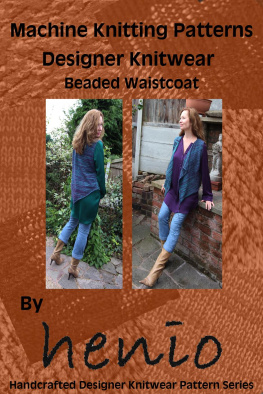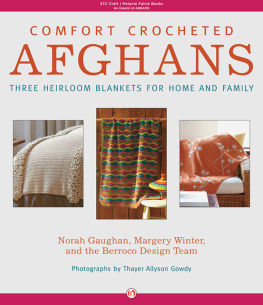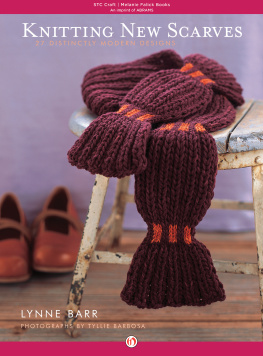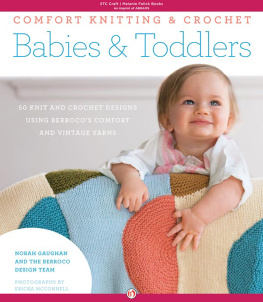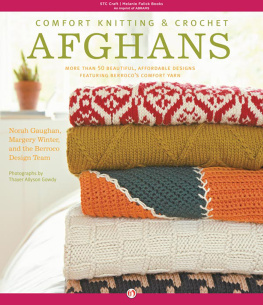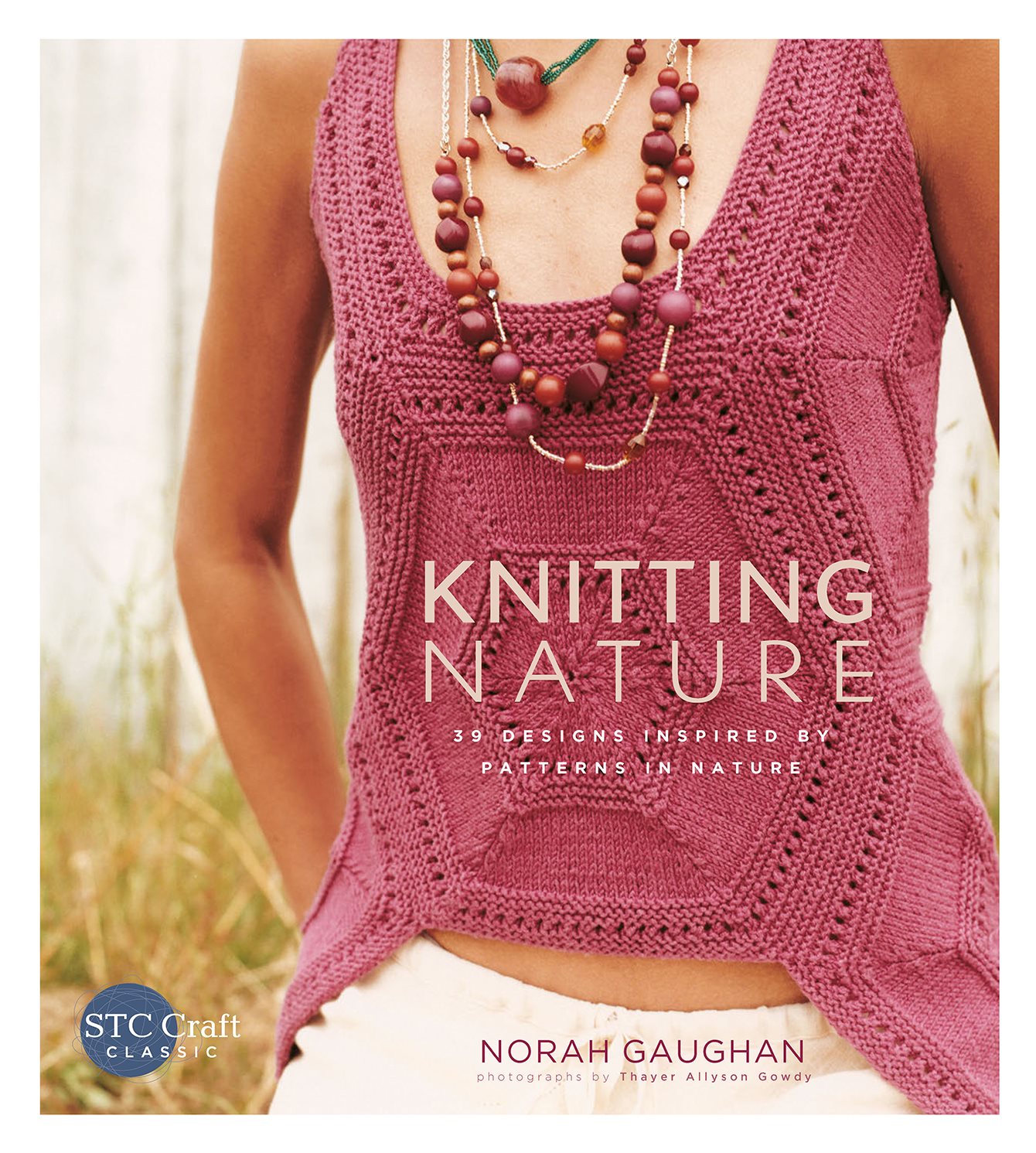
For my parents, Phoebe Adams Gaughan and Jack Gaughan,
who lovingly raised me to appreciate both art and science.
Originally published in 2006 by Stewart, Tabori & Chang, an imprint of ABRAMS.
This edition published in 2012.
Text copyright 2006 Norah Gaughan
Photographs except on copyright 2006 Thayer Allyson Gowdy
Photograph on courtesy of Getty Images.
The following companies generously provided props, wardrobe, and accessories for the Knitting Nature photos:
Still Life
The Gardener, 1836 Fourth Street, Berkeley, Ca. 94710, www.thegardener.com
The Bone Room, 1569 Solano Ave., Berkeley, Ca. 94707, www.boneroom.com
Wardrobe and Accessories
Macys West, 170 OFarrell Street, San Francisco, Ca. 94102, www.macys.com
Zilda by Flavia, 340 Bryant Street, Studio 102, San Francisco, Ca. 94107, www.zildabyflavia.com
House of Hengst Inc., 924 Valencia Street, San Francisco, Ca. 94110, www.houseofhengst.com
Painted Bird, 1201 A Guerrero Street, San Francisco, Ca. 94110, www.paintedbird.org
All rights reserved. No portion of this book may be reproduced, stored in a retrieval system, or transmitted in any
form or by any means, mechanical, electronic, photocopying, recording, or otherwise, without written permission
from the publisher.
The Library of Congress has cataloged the hardcover edition of this book as follows:
Gaughan, Norah.
Knitting Nature : 39 designs inspired by patterns in nature / Norah Gaughan ; photographs by
Thayer Allyson Gowdy.1st ed.
p. cm.
Includes index.
ISBN 978-1-58479-484-4
1. KnittingPatterns.
2. Knitwear.
I. Title
TT825.G28 2006
746.43'2041dc22
2005026722
Paperback ISBN 978-1-58479-968-9
Edited by Melanie Falick
Book Design: Anna Christian
Production Manager: Jane Searle
The text of this book was composed in Minion and Gotham.
ABRAMS The Art of Books
195 Broadway, New York, NY 10007
abramsbooks.com
eISBN 978-1-64700-606-8

and subtle mathematical theory of certain aspects of
knitting. Cable patterns are related to mathematical objects
known as braid groups. Likewise, the problem of optimally
picking up stitches is connected to solving systems of so-
called Diophantine equations. The eighteenth-century
philosopher Immanuel Kant famously declared that the
criterion for the development of a true science lies in its
relation to mathematics. Evidently, one lesson to be learned
from Knitting Nature is that a similar criterion may apply
to some forms of art. In his classic work, The Structure of
Scientific Revolutions , Thomas Kuhn introduced the concept
of the paradigm shiftan intellectual revolution in which
one world view is replaced by another. It may not be an
exaggeration to suggest that Knitting Nature accomplishes
such a transformation.
It has been somewhat facetiously said that it is
difficult to make predictions, especially about the future.
Nevertheless, I expect that the impact of Norahs ideas will be
widely felt within the knitting community. Perhaps one of
the readers of this book will be inspired to further explore the
connections between knitting and the natural world and
thereby extend Norahs pioneering vision.
Prof. John C. Schotland
University of Pennsylvania
FOREWORD
I
am extremely pleased and honored to introduce Norah
Gaughans first book. Norah and I have been friends for
nearly two decadeslonger than either of us like to think
about. Our respective views of the world overlap to a
remarkable degree. How, in the early part of the twenty-
first century, can an artist and a scientist find so much
intellectual common ground? Some clues to the answer to
this question can be found in Knitting Nature , which explores
the use of naturally occurring geometrical motifs in knitting.
Over the years, Norah and I have had numerous
discussions regarding the duality between patterns in nature
and patterns in knitting. Our talks have ranged over many
topics, particularly the powerful unifying role of symmetry
principles, which govern the behavior of physical systems on
all scales. Several of Norahs highly original designs are illus-
trative of this principle and incorporate aspects of hexagonal
and pentagonal symmetries, the latter making contact with
nonperiodic tilings of the plane and other modern develop-
ments.Another topic we have discussed is the emergence of
complex behaviors from seemingly simple rules in systems
such as the Koch curve. Norah has made use of this concept
in her design of the Coastline Camisole and Skirt as well as in
my favorite,the elegant Ogee Tunic.In each of these examples,
Norahs clear and beautifully written descriptions reflect her
deep understanding of the underlying scientific principles.
On a more abstract note, Norah and I have often
wondered about the possible applications of mathematics to
knitting. It is known that there is a surprisingly sophisticated
d
FOREWORD


